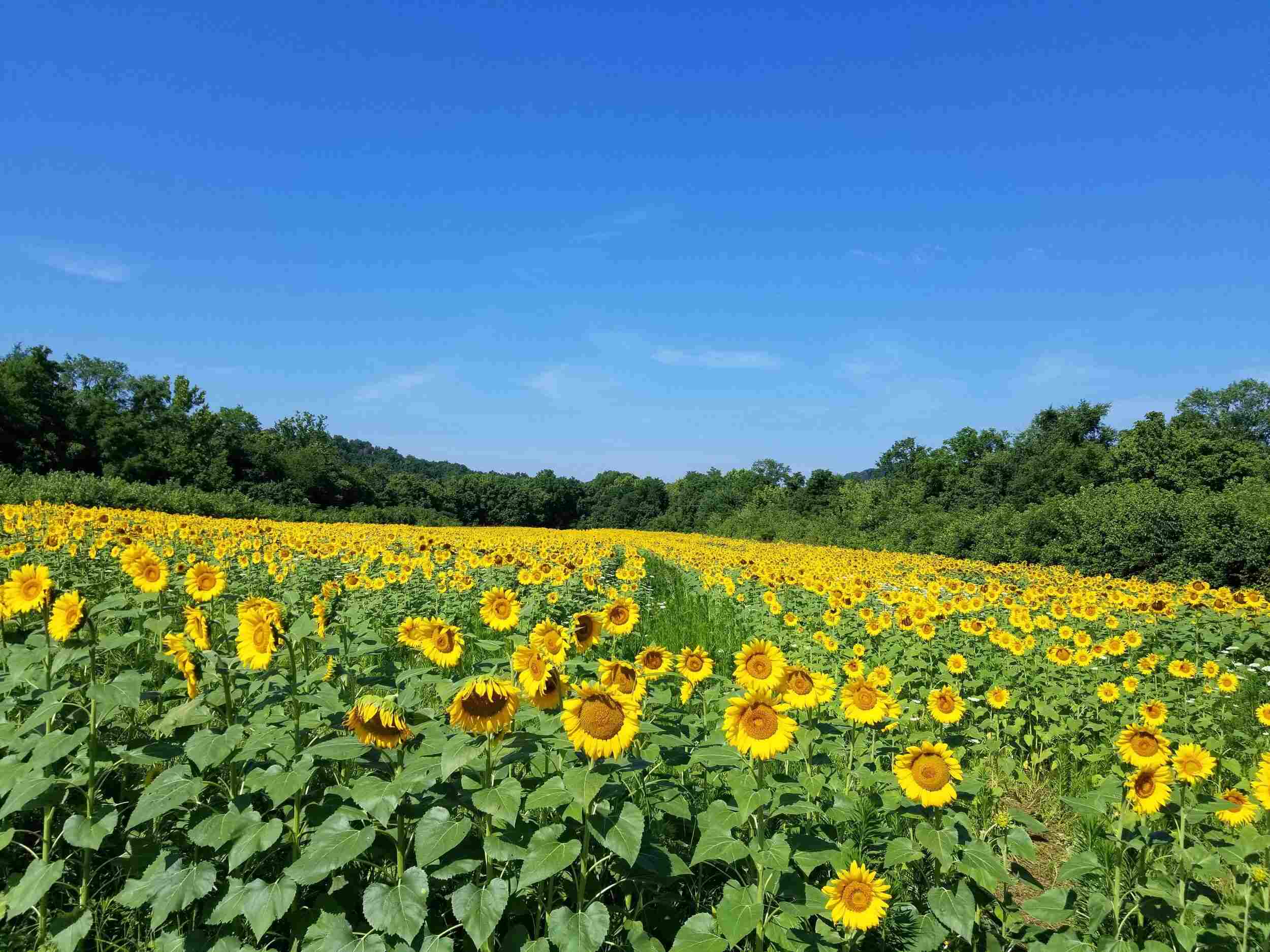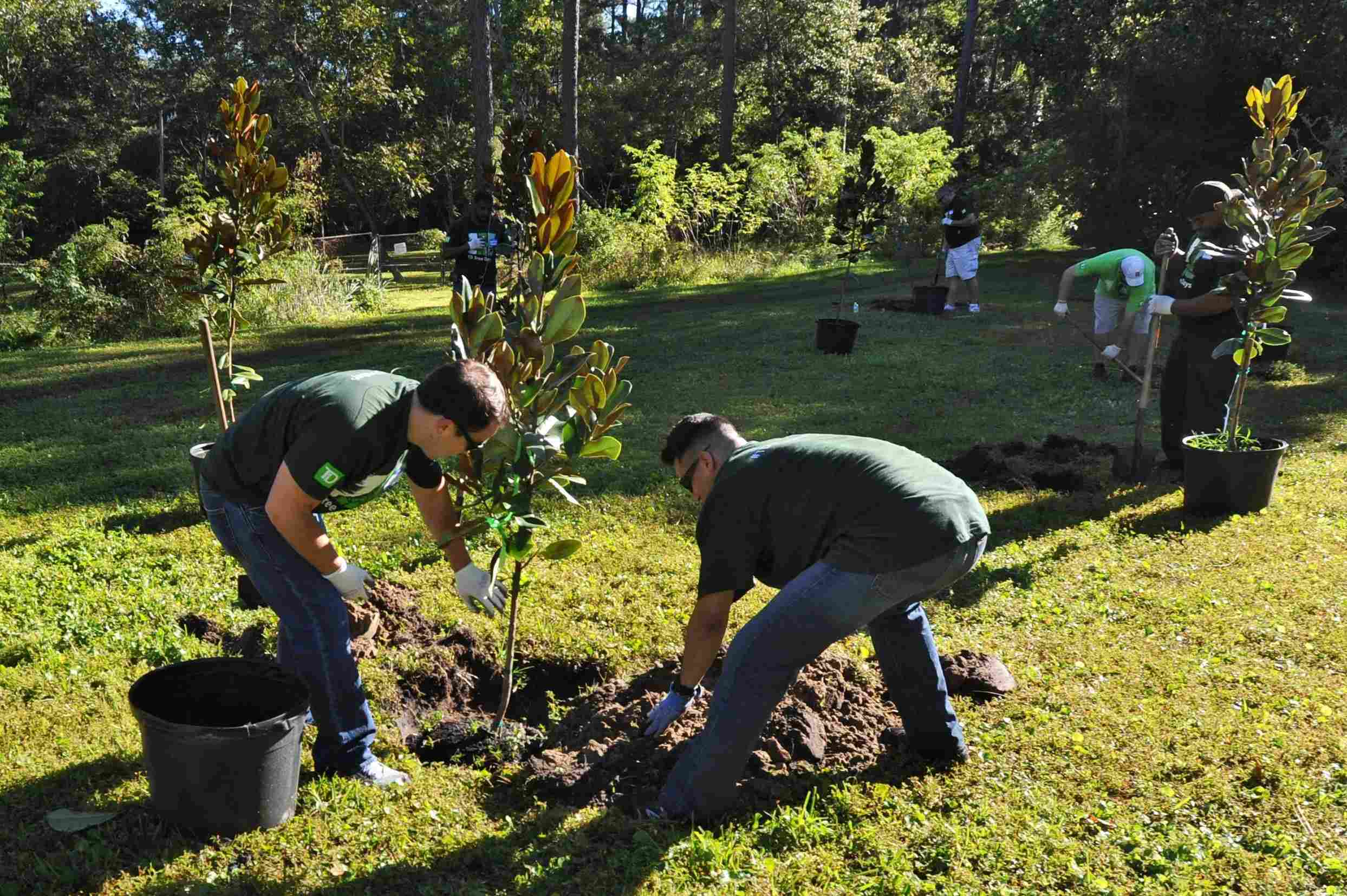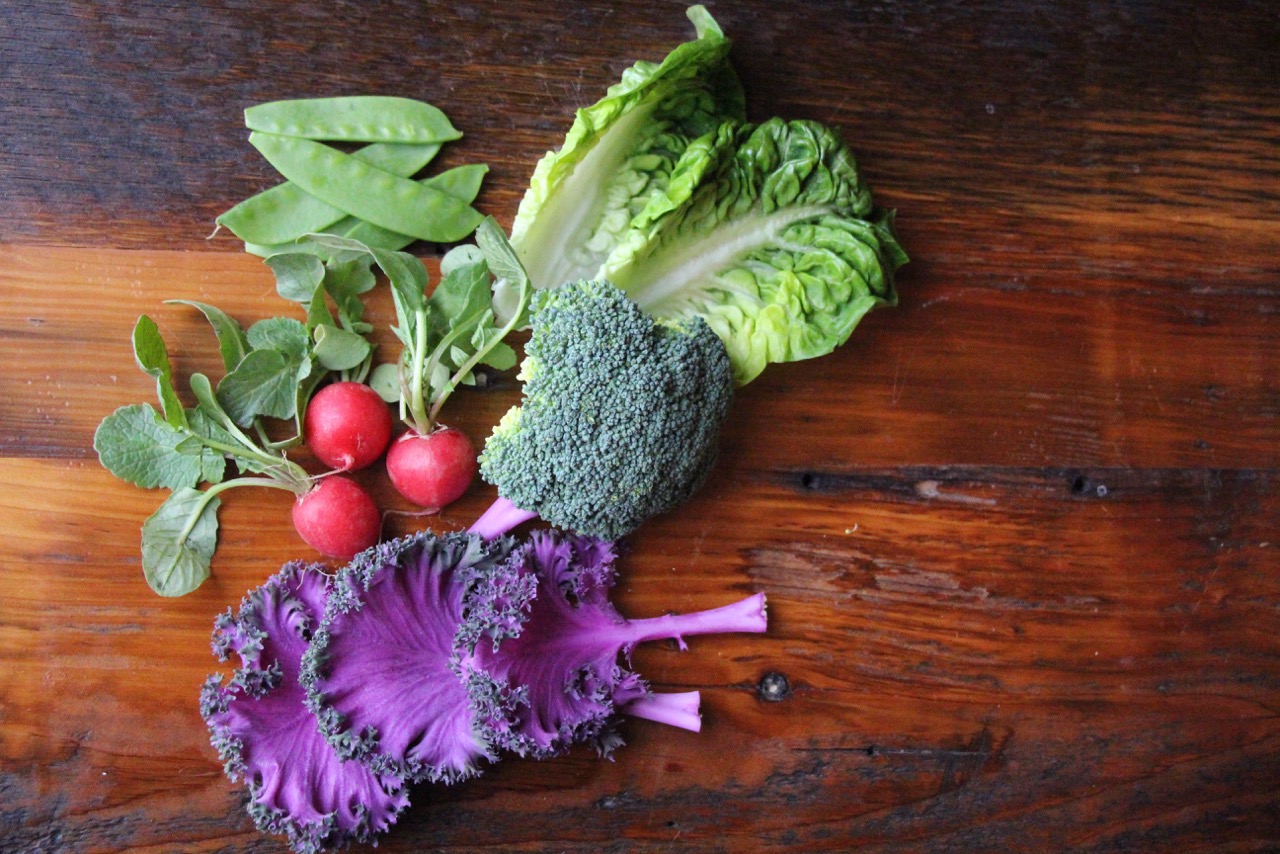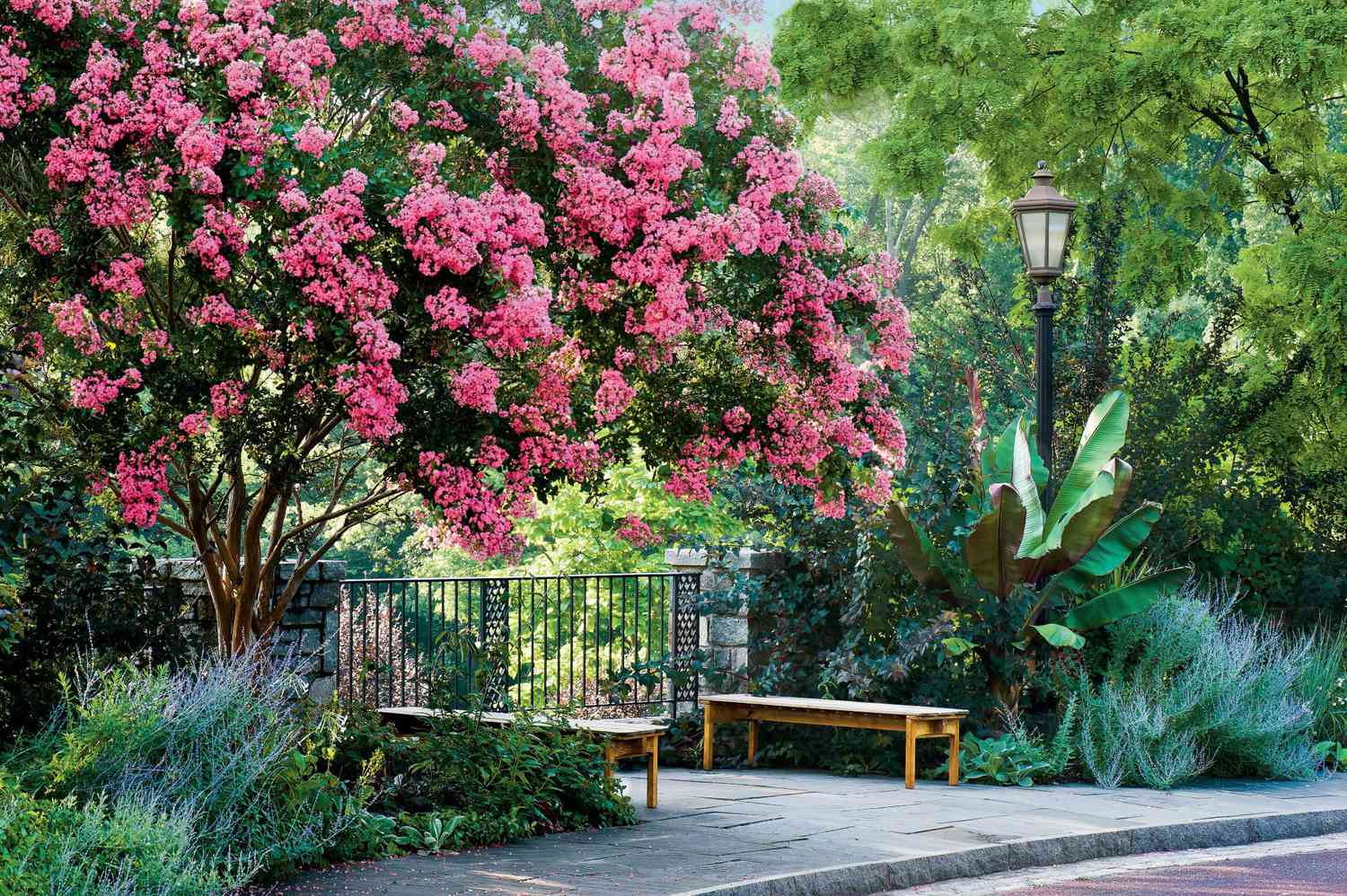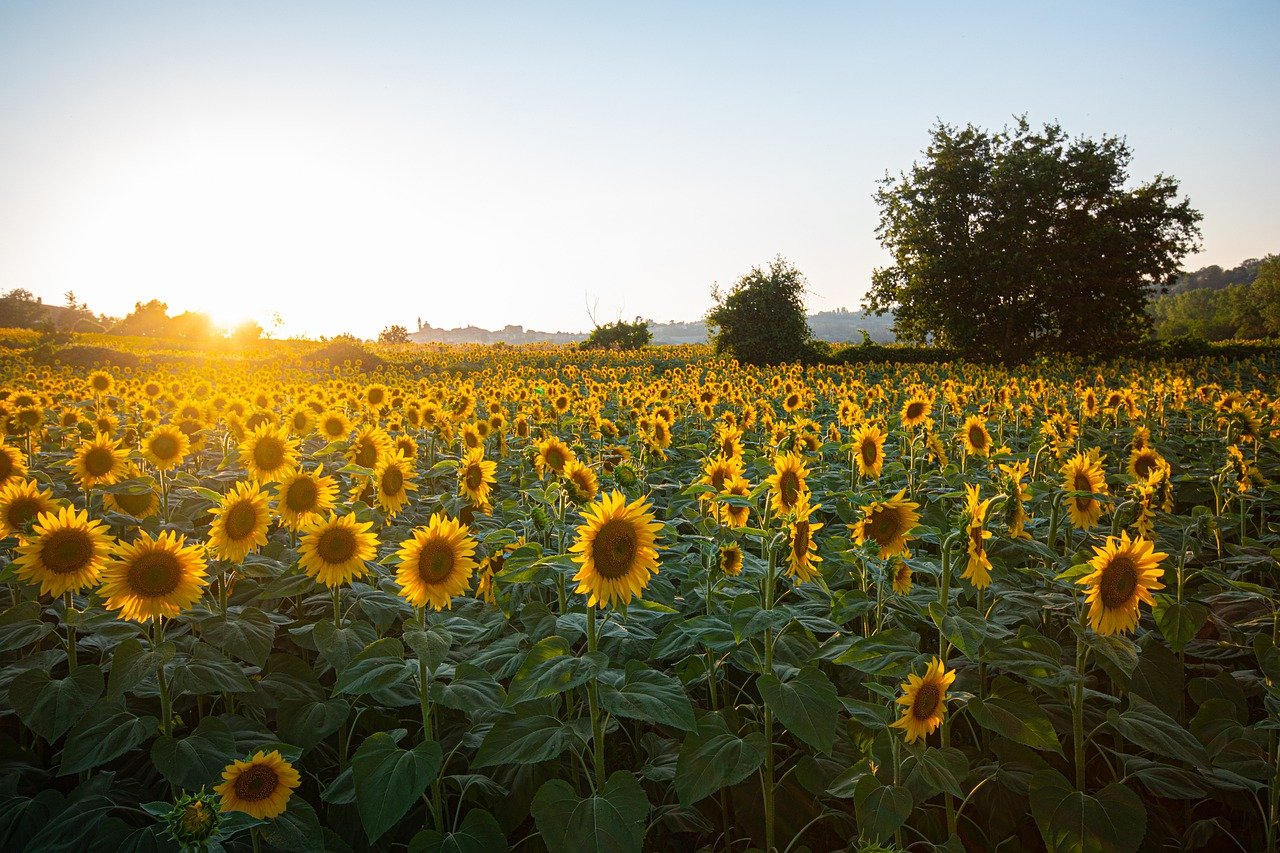Home>Types of Gardening>Ornamental Gardening>What Trees Are Blooming In Tennessee Right Now


Ornamental Gardening
What Trees Are Blooming In Tennessee Right Now
Modified: January 22, 2024
Discover the stunning ornamental trees currently blooming in Tennessee. Enhance your gardening experience with vibrant colors and fragrant blossoms.
(Many of the links in this article redirect to a specific reviewed product. Your purchase of these products through affiliate links helps to generate commission for Chicagolandgardening.com, at no extra cost. Learn more)
Table of Contents
Introduction
Ornamental gardening is a popular and rewarding hobby that allows individuals to create beautiful landscapes filled with vibrant colors and mesmerizing floral displays. Among the various elements that contribute to a breathtaking garden, blooming trees are an essential component. Their vibrant flowers not only add visual appeal but also attract pollinators, creating a buzzing ecosystem right in your backyard.
Tennessee, known for its diverse climate and rich soil, offers an abundance of tree species that burst into bloom throughout the year. From the elegant dogwood trees to the majestic magnolias, there is something for every gardening enthusiast to enjoy. Whether you are a seasoned gardener or a beginner looking to add some charm to your landscape, exploring the flowering trees of Tennessee is a delightful journey.
The state’s unique geographic location makes it home to a wide array of native and non-native tree species. Each tree has its own distinct bloom time, ranging from early spring to late summer. By incorporating a mix of these trees into your garden, you can create a year-round spectacle that changes with the seasons.
In this article, we will explore some of the most captivating flowering trees that are currently in bloom in Tennessee. Each tree offers its own allure and beauty, making them a fantastic addition to any ornamental garden. Let’s embark on this virtual tour of Tennessee’s blooming trees and discover the wonders they have to offer.
Dogwood Trees
Dogwood trees are iconic in Tennessee, especially in the springtime when their delicate blossoms blanket the landscape. These trees, known for their stunning white or pink flowers, are a favorite among gardeners and nature enthusiasts alike. The vibrant blooms of dogwood trees bring a touch of elegance to any garden or park.
There are three primary species of dogwood trees found in Tennessee: the flowering dogwood (Cornus florida), the kousa dogwood (Cornus kousa), and the hybrid dogwood (Cornus x rutgersensis). Each species offers its own unique characteristics and bloom time.
The flowering dogwood, the state tree of Tennessee, is a native species that typically blooms in early spring, usually around April. Its small, four-petaled flowers range in color from pure white to shades of pink and can remain on the tree for several weeks. These flowers are often surrounded by large, showy bracts that give the tree an extra burst of color.
Kousa dogwoods, native to Asia, bloom slightly later in the spring, usually in May. They produce small clusters of creamy-white flowers with pointed petals that give them a star-like appearance. After the blooms fade, they are replaced by unique raspberry-like fruits that add visual interest to the tree during the summer months.
Hybrid dogwoods are a cross between the flowering and kousa species, resulting in trees with a combination of their desirable traits. These hybrids typically bloom in mid-spring and offer a mix of white, pink, and red blossoms, creating a striking display.
When planting dogwood trees, it is important to choose a location with well-drained soil and partial shade. These trees prefer slightly acidic soil and benefit from mulching to retain moisture. Regular watering, especially during dry spells, will help keep the trees healthy and encourage blooming.
Whether you choose a native or hybrid variety, dogwood trees are sure to add beauty and charm to your ornamental garden. Their picturesque blooms and graceful branches make them a perennial favorite among Tennessee gardeners.
Cherry Trees
Cherry trees are renowned for their breathtaking display of blossoms, which transforms landscapes into stunning shades of pink and white. These flowering trees are a sight to behold and are highly sought after by gardeners and nature lovers in Tennessee. With their delicate petals and sweet fragrance, cherry trees bring a touch of beauty and elegance to any garden.
There are several types of cherry trees that thrive in Tennessee’s climate, including the Yoshino cherry (Prunus x yedoensis), Kwanzan cherry (Prunus serrulata ‘Kwanzan’), and the black cherry (Prunus serotina).
The Yoshino cherry, also known as the Japanese flowering cherry, is a popular choice for ornamental gardens due to its stunning display of pale pink to white blossoms. These trees usually bloom in early spring, typically around March or April. The sight of Yoshino cherry trees in full bloom is a true sign that spring has arrived in Tennessee. These trees make a beautiful addition to parks and gardens, attracting admirers with their graceful branches adorned with masses of cherry blossoms.
The Kwanzan cherry is another cherished variety known for its vibrant double-petaled pink blooms. Unlike the Yoshino cherry, Kwanzan cherry trees bloom later in the spring, typically in April or May. The large and abundant blossoms create a striking visual impact, making Kwanzan cherries a favorite choice for landscaping projects.
Last but not least, the black cherry is a native species that is commonly found in Tennessee. While it may not produce the same showy display as the Yoshino or Kwanzan cherry trees, the black cherry is valued for its clusters of fragrant white flowers and dark cherries that attract birds and wildlife. These trees typically bloom in late spring or early summer and contribute to the ecological diversity of ornamental gardens.
When planting cherry trees, it is important to choose a well-drained location with full sun exposure. These trees require moderate watering and benefit from regular pruning to maintain their shape and promote healthy growth. Additionally, applying a layer of mulch around the base of the tree helps retain moisture and control weeds.
Cherry trees are not only visually stunning but also hold cultural significance, symbolizing beauty, renewal, and the transience of life. By adding these exquisite flowering trees to your garden, you can create a serene and captivating sanctuary right at your doorstep.
Redbud Trees
Redbud trees are a delightful addition to any ornamental garden, offering a burst of color and early spring blooms. These small to medium-sized deciduous trees are native to Tennessee and can be found in various habitats throughout the state. With their vibrant pink to purple flowers and heart-shaped leaves, redbud trees create a charming and enchanting atmosphere in landscapes.
The Eastern redbud (Cercis canadensis) is the most common species of redbud found in Tennessee. These trees are known for their profusion of vivid pink or purple blossoms that cover the branches before the leaves emerge. The flowers appear in early spring, usually around March or April, creating a stunning contrast against the bare branches and signaling the arrival of warmer weather.
Redbud trees are relatively easy to grow and maintain, making them a popular choice for both experienced and novice gardeners. They can tolerate a wide range of soil types, including clay and sandy soils, but prefer well-drained locations. Redbuds thrive in full sun to partial shade, with some afternoon shade being beneficial in hot summer climates.
When planting redbud trees, it is important to dig a hole slightly wider and deeper than the tree’s roots. Gently place the tree in the hole, ensuring that the root flare is at or slightly above ground level. Backfill the hole with soil, firming it gently to eliminate air pockets. Water the tree thoroughly and apply a layer of mulch around the base to help retain moisture and control weeds.
In addition to their stunning spring blooms, redbud trees also offer year-round visual interest. The heart-shaped leaves emerge after the flowers fade, providing a lush green canopy during the warmer months. In autumn, the leaves turn golden-yellow, adding a touch of autumnal beauty to the landscape. The tree’s distinctive branching pattern, with spreading limbs and twisting trunks, creates an interesting silhouette in the winter landscape.
Redbud trees are not only visually appealing but also attract a variety of pollinators, including bees and butterflies, with their nectar-rich flowers. Their small size and moderate growth rate make them suitable for gardens of all sizes, including urban and suburban landscapes. Whether used as a focal point, a border tree, or as part of a mixed planting, redbud trees add charm and elegance to any outdoor space.
Magnolia Trees
Magnolia trees are renowned for their strikingly beautiful flowers and captivating fragrance. These ornamental trees have been cherished for centuries for their elegant blooms and glossy, leathery leaves. With their large, showy flowers and lush foliage, magnolia trees are a true delight for gardeners and nature enthusiasts in Tennessee.
There are several species and cultivars of magnolia that thrive in Tennessee’s climate, including the Southern magnolia (Magnolia grandiflora), the Saucer magnolia (Magnolia x soulangeana), and the Star magnolia (Magnolia stellata).
The Southern magnolia, also known as the evergreen magnolia, is an iconic tree in the southern United States. This majestic tree is prized for its large, fragrant, white flowers that can reach up to 12 inches in diameter. The blooms appear in late spring to early summer, and their sweet fragrance fills the air, attracting bees and other pollinators. The lush, glossy green foliage of the Southern magnolia adds beauty and depth to the landscape throughout the year.
The Saucer magnolia is a hybrid magnolia that produces stunning, goblet-shaped flowers in shades of pink and white. These blossoms emerge in early spring, before the leaves unfurl, creating a dramatic display. The Saucer magnolia is a popular choice for ornamental gardens, as its flowers bring a vibrant burst of color and a touch of whimsy.
The Star magnolia is a small, deciduous tree that blooms in early spring. Its delicate, star-shaped flowers range in color from white to pale pink. The blossoms cover the tree’s bare branches, creating a beautiful contrast against the late winter landscape. The Star magnolia is a favorite among gardeners for its early bloom time and the exquisite beauty it brings to gardens.
Magnolia trees are relatively low-maintenance and thrive in well-drained soil with regular watering. These trees prefer full sun to partial shade and can tolerate a variety of soil types. When planting magnolias, it is important to provide enough space for the tree to grow and spread. Pruning should be done selectively, mainly to remove dead or damaged branches and maintain the desired shape.
Adding a magnolia tree to your garden is a surefire way to create a stunning focal point. These trees not only bring beauty and fragrance but also evoke a sense of history and tradition. Whether you choose a Southern magnolia for its timeless elegance or a Saucer magnolia for its vibrant blooms, the addition of a magnolia tree will undoubtedly enhance the charm and allure of your ornamental garden.
Crabapple Trees
Crabapple trees are prized for their exquisite blooms, fruit, and ornamental value. These small to medium-sized trees are a delightful addition to ornamental gardens, adding beauty and charm. With their showy flowers, colorful fruit, and attractive foliage, crabapple trees create a stunning display that is sure to captivate both gardeners and passersby.
Crabapple trees, also known as malus, belong to the Rosaceae family and are available in a wide range of varieties and cultivars. They are native to North America and have been bred for ornamental purposes, resulting in a diverse array of flower colors, fruit sizes, and tree forms.
One of the most notable features of crabapple trees is their abundant blossoms. In the spring, their branches become adorned with clusters of vibrant flowers in shades of white, pink, and red. These blossoms attract pollinators such as bees and butterflies, adding life and movement to the garden.
Moreover, crabapple trees produce small fruit that varies in color and size, depending on the variety. These fruits can range from bright red to yellow, and they often persist on the tree throughout much of the year, creating an eye-catching display. The fruit is not only visually appealing but also attracts birds, which feast on the tasty and nutritious treats.
Crabapple trees are generally low-maintenance, making them suitable for a variety of garden settings. They prefer well-drained soil and thrive in full sun to partial shade. Regular watering, especially during dry periods, is important to keep the trees healthy and promote optimal growth and blooming.
When selecting a crabapple tree for your garden, consider the desired height and spread, flower color, and fruit size. Some popular varieties include ‘Royal Raindrops,’ known for its stunning purple foliage and dark pink flowers, and ‘Sugar Tyme,’ which offers a profusion of white flowers and persistent red fruit.
Crabapple trees can be used in a variety of landscape applications, from focal points in the garden to mass plantings and even small ornamental hedges. Their versatility and beauty make them a popular choice for those seeking a tree that offers year-round interest.
With their magnificent spring blooms, colorful fruit, and attractive foliage, crabapple trees bring a touch of elegance and beauty to ornamental gardens. Whether you choose one for its stunning flowers or its ability to attract wildlife, crabapple trees are sure to add charm and visual appeal to your outdoor space.
Fringe Trees
Fringe trees, also known as Chionanthus, are unique and captivating ornamental trees that are native to the southeastern United States, including Tennessee. These trees get their name from the fringe-like clusters of delicate, white flowers that drape from the branches, creating a stunning display in spring.
The most commonly grown species of fringe tree is the American fringe tree (Chionanthus virginicus). This small to medium-sized tree produces an abundance of fragrant flowers in late spring or early summer. The flowers have a delicate and airy appearance, similar to dainty white fringe or tassels, which gives the tree its distinct allure. As the blooms fade, they give way to dark blue, berry-like fruits that attract birds.
One of the unique features of fringe trees is their versatility in garden design. They can be grown as standalone focal points, grouped together for a striking effect, or incorporated into mixed planting schemes. With their graceful branches and exceptional flower displays, fringe trees add a sense of beauty and elegance to any landscape.
When planting a fringe tree, choose a location with well-drained soil and full to partial sun exposure. These trees prefer moist soil but can tolerate a range of soil types. Adequate watering, especially during dry spells, will help keep the tree healthy and promote optimal flowering.
Fringe trees are relatively low-maintenance and do not require extensive pruning. However, if necessary, selective pruning can be done after flowering to maintain the tree’s shape and remove any dead or damaged branches.
Aside from their exceptional beauty, fringe trees also offer benefits to wildlife. The flowers attract butterflies and bees, playing a crucial role in supporting pollinators. The subsequent fruit provides a food source for birds, enriching the biodiversity of your garden.
Whether used as a focal point, as part of a mixed planting, or in a naturalized setting, fringe trees are sure to add a touch of charm and sophistication to your ornamental garden. The unique and eye-catching flowers, coupled with their adaptability and wildlife-friendly attributes, make fringe trees a perfect choice for gardeners looking to create a captivating and vibrant landscape.
Flowering Pear Trees
Flowering pear trees, known scientifically as Pyrus calleryana, are popular choices for ornamental gardens due to their stunning spring blossoms and attractive foliage. These trees are native to China and have been widely cultivated for their beauty and versatility. With their abundance of delicate white flowers and vibrant fall foliage, flowering pear trees bring undeniable charm and elegance to any landscape.
One of the most enchanting features of flowering pear trees is their profusion of white blossoms in early spring. The tree becomes adorned with clusters of small, five-petaled flowers, creating a breathtaking display. These flowers are not only visually pleasing but also emit a pleasant fragrance that attracts bees and other pollinators.
In addition to their stunning spring blooms, flowering pear trees offer attractive foliage throughout the growing season. The leaves emerge in a rich shade of green, creating a lush canopy. As autumn approaches, the foliage transitions to vibrant hues of red, orange, and bronze, providing a striking visual spectacle.
Flowering pear trees are relatively low-maintenance and adaptable to various soil types. They prefer well-drained soil and full sun exposure to ensure optimal growth and blooming. These trees are also known for their strong branch structure, making them more resistant to wind damage compared to other species.
One popular variety of flowering pear tree is the Bradford pear (Pyrus calleryana ‘Bradford’). This cultivar is prized for its uniform and symmetrical shape, making it a great choice for formal landscapes. Another popular variety is the Chanticleer pear (Pyrus calleryana ‘Chanticleer’), which offers a narrower and more upright growth habit, making it suitable for smaller spaces.
When planting a flowering pear tree, it is important to provide adequate spacing to allow for its mature size. Regular watering during the establishment period and supplemental watering during dry spells are recommended to promote healthy growth. Pruning should be done selectively to maintain the desired shape and remove any dead or crossing branches.
Flowering pear trees bring a touch of elegance and beauty to any ornamental garden. Their exquisite blooms and vibrant fall foliage create a captivating display throughout the year. Whether used as a standalone specimen, in group plantings, or as a street tree, flowering pear trees are sure to enhance the enchantment and charm of your outdoor space.
Tulip Poplar Trees
Tulip poplar trees, scientifically known as Liriodendron tulipifera, are magnificent and fast-growing trees that have earned their place as one of the iconic trees of Tennessee. Despite the name, tulip poplars are not actually poplar trees, but rather belong to the magnolia family. These majestic trees are celebrated for their towering height, vibrant yellow flowers, and unique leaf shape, making them a cherished addition to ornamental gardens.
The yellow flowers of the tulip poplar are a sight to behold. Resembling tulips, these blossoms emerge in late spring to early summer, adding a burst of color to the landscape. Each flower showcases six petals and a vibrant orange center, attracting bees, butterflies, and hummingbirds with their nectar-rich blooms.
In addition to their eye-catching flowers, tulip poplar trees have distinct leaves that resemble tulip shapes, hence their name. The large, glossy leaves have four lobes and a unique silhouette that adds depth and beauty to the tree’s overall appearance. In the fall, the leaves turn a lovely golden yellow, creating a striking contrast against the blue sky.
Tulip poplar trees are known for their rapid growth, often reaching heights of 70 to 90 feet or more. Their straight trunks and pyramidal shape make them impressive focal points in any landscape. Planting tulip poplars in a location that provides full sun exposure and well-draining soil is crucial for their optimal growth and development.
These trees are low-maintenance but benefit from regular watering, especially during dry periods. Pruning can be done to remove dead or crossing branches, shaping the tree, or maintaining a desired size. Young tulip poplar trees may require staking for support until their root system becomes established.
Tulip poplar trees are more than just stunning ornamental additions to gardens; they also have historical and ecological significance. They are one of the tallest hardwood trees in the eastern United States and have provided valuable timber for construction throughout history. Moreover, these trees are hosts to numerous species of insects and provide food and shelter for various wildlife, including birds and squirrels.
Whether planted as a specimen tree, in groupings, or along driveways and streets, tulip poplar trees make a bold statement in any landscape. Their magnificent height, showy blossoms, and unique leaves are sure to capture the attention and admiration of all who encounter them.
Eastern Redcedar Trees
Eastern Redcedar trees, scientifically known as Juniperus virginiana, are versatile and resilient trees that are native to Tennessee and many parts of North America. Despite their name, these trees are not actually cedars, but rather belong to the juniper family. Eastern Redcedar trees are valued for their evergreen foliage, rustic appearance, and adaptability, making them a popular choice for ornamental gardens and landscaping projects.
One of the defining features of Eastern Redcedar trees is their dense, scale-like foliage, which remains green year-round. The foliage has a fragrant aroma when crushed, adding a pleasant scent to the garden. The tree’s foliage provides excellent cover and a reliable source of food and shelter for birds and other wildlife.
In addition to their foliage, Eastern Redcedar trees produce small, bluish-purple berries that are a favorite among birds. The berries are not only visually appealing but also serve as an important food source during the winter months.
Eastern Redcedar trees are known for their ability to thrive in various soil conditions and climates. They are remarkably adaptable and can tolerate drought, high temperatures, and poor soil quality. These characteristics make them valuable for reforestation projects, erosion control, and windbreaks.
In ornamental gardens, Eastern Redcedar trees can be used as specimen trees or in hedgerows to provide privacy or create division within the landscape. They have a rugged and picturesque appearance, with their reddish-brown bark and twisting trunks, which adds character and visual interest.
When planting Eastern Redcedar trees, choose a location that receives full sun exposure for optimal growth. These trees are relatively low-maintenance but appreciate regular watering, especially during dry spells. They are also known for their resistance to many pests and diseases, making them a hassle-free option for gardeners.
Eastern Redcedar trees have cultural significance as well. They have been used by Native Americans and early settlers for various purposes, including building shelters, crafting tools, and even in traditional medicine.
With their hardy nature, year-round greenery, and wildlife-friendly attributes, Eastern Redcedar trees offer both aesthetic appeal and practical benefits. Incorporating these trees into your ornamental garden or landscape design can create a natural and timeless ambiance while attracting and supporting wildlife.
Conclusion
Tennessee is blessed with a diverse array of blooming trees that add beauty and vibrancy to its landscapes throughout the year. From the iconic dogwood trees with their elegant blossoms to the towering tulip poplar trees that grace the forests, each species offers its own unique charm and appeal.
By incorporating these blooming trees into ornamental gardens, individuals can create stunning landscapes that change with the seasons and attract a variety of pollinators and wildlife. The delicate blooms of the cherry trees, the graceful flowers of the magnolia trees, and the cascading clusters of the fringe trees all contribute to a visual feast for the senses.
But it’s not just the beauty of these trees that makes them so special. They also connect us to nature, reminding us of the cycles of life and the importance of biodiversity. They offer shade and shelter, provide nesting spots for birds, and create habitats for insects and other animals.
When selecting and planting these blooming trees, it is important to consider factors such as soil type, sun exposure, and watering needs. By providing the right conditions and care, these trees will flourish and bring joy for years to come.
Whether you are a seasoned gardener or just beginning to explore the world of ornamental gardening, the blooming trees of Tennessee are waiting to inspire and enchant you. So, grab your gardening tools, select your favorite tree species, and embark on a journey of creating a landscape that will fill your heart with joy and leave a lasting impression on all who visit.
Let the beauty and grace of these blooming trees ignite your passion for gardening and allow nature’s wonders to unfold right in your own backyard. Embrace the colors, scents, and textures that these trees offer, and let them become the centerpiece of your ornamental garden.
